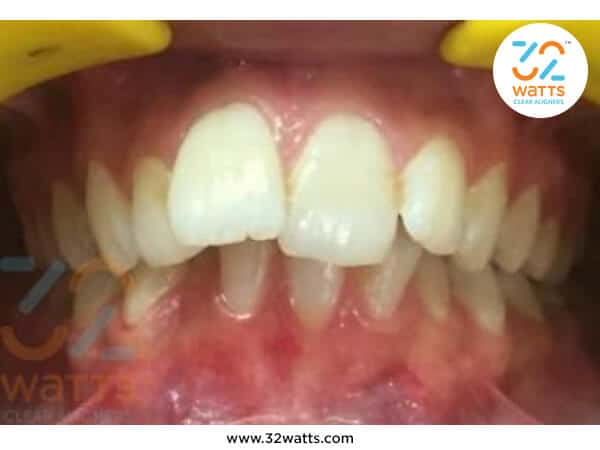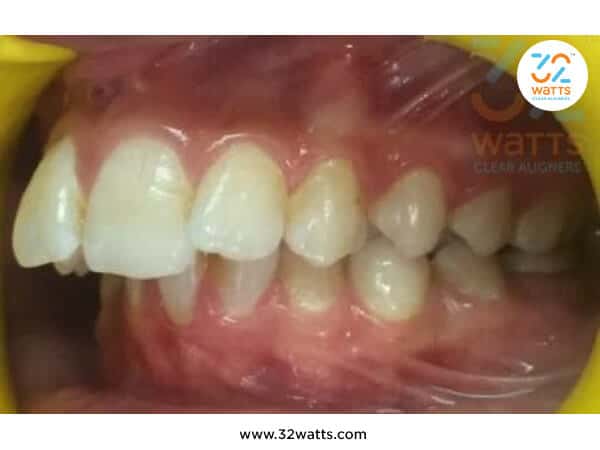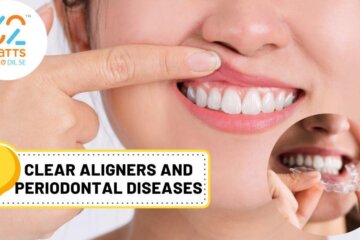Table of Content
In a normal occlusion, your upper teeth overlap your lower teeth vertically. This overlap is called an overbite. Every individual has variable degrees of vertical overlap. However, when this overlap is too less or too much, it needs to be corrected. Many a time, the overlap may not be very evident visually, but it can cause many underlying problems such as wearing of teeth, pain, mobility of teeth etc. But, in a majority of cases, patients usually complain of aesthetic problems when they have an abnormal vertical overlap of upper and lower teeth.
Also Read: Best Clear Aligners in India
Why and How do Overbites Occur?
Overbites are actually more commonly occurring than you think! Usually, overbites have a genetic or hereditary cause. When permanent teeth are emerge from the gums in a child, they continue to erupt until they hit the opposing teeth. Sometimes, the teeth erupt randomly or in random positions, resulting in malocclusion’s like overbites.

what is an overbite
what is an overbite
Apart from this, other common reasons for an abnormal overbite are functional habits such as thumb-sucking and tongue thrusting. When a child sucks his/her thumb, it puts pressure on the upper and lower front teeth, causing them to flare outwards. This outward or forward motion forces the lower jaw to retract backward. Together, there is overlap between the upper and lower teeth!
While one may presume that the overbite gets better as the child grows up, it actually worsens as one ages. This is one of the primary reasons that adults seek correction of the overbite later in life.
Suggestions: What are the Types of Braces Work the Fastest
What is Normal Overbite?
Is there a measurement of vertical overlap that is considered as normal? Yes, there is. Vertical overlap of 2mm between the upper and lower front teeth is considered to be normal wherein the upper front teeth are overlapping the lower front teeth by 2mm. The range of 2mm-4mm is generally considered an average range.
When the overbite is within this range, the upper and lower teeth appear aesthetic. Lesser overbite makes your teeth more visible and noticeable. In the case of no overbite i.e, the upper front teeth do not cover the lower front teeth as in case of an open bite, there is a visible gap between the upper and lower front teeth even when the jaws are closed and the upper and lower back teeth are meeting.
Excessive overbite results in only the upper front teeth being visible whereas the lower front teeth remain hidden. In all these abnormalities, the teeth suffer in their health and functionality and need immediate correction using orthodontics.
Types of Overbites
There are essentially two types of overbites –Dental and Skeletal
A dental overbite arises due to improper alignment of the teeth. The jaws, in this case, are properly aligned and balanced. The improper teeth alignment can be due to the upper teeth or the lower teeth or both together. These overbites are easy to treat and require non-surgical procedures to do so!
A skeletal overbite occurs when the upper and lower jaw are not well aligned or one is smaller or bigger than they should be in comparison the opposing jaw. Though some minor skeletal overbites can be corrected using non-surgical orthodontics, severe cases require surgery to be done.
Why Should an Overbite be Corrected?
Many a time, individuals with an overbite do not seek correction for the same. Either due to cost, duration of treatment or just because they do not care much for it! However, it is important to understand that apart from very mild cases of overbite, this type of malocclusion requires treatment.
If left untreated, overbites can result in many dental, skeletal and TM joint-related complications.
Some commonly occurring problems due to an uncorrected overbite are:
- Wearing away of teeth (irreparable in most cases)
- Tooth mobility
- Sensitivity and pain in the upper and lower teeth
- Tooth decay and cavities
- Gum and underlying bone conditions
- Jaw pain
- Severe headaches
- Pain or discomfort while eating
- Difficulty in speaking
- Loss of teeth
- Changes in facial structure that can impact the mental well-being of the individual
Overbite Correction in Adult
When a patient reports to the dentist’s office with an overbite problem, he/she is referred to an orthodontist who specialists in treating these kinds of dental problems. Overbites can occur in both kids and adult, and in both cases, they require treatment. While in children an overbite problem occurs due to crowding of teeth, in adults an overbite usually results either because it was left uncorrected in the childhood or teenage or due to loss of back teeth that have resulted in the collapse of the bite in the front teeth area.
The treatment protocol of an overbite depends on the age of the patient.
In the case of children and teens, an overbite can be corrected by a combination of one or more options mentioned below:
- Remove any over-retained milk teeth to make space for the erupting permanent teeth
- Using a growth-modification device that uses the child’s or teen’s natural growth forces to align the jaw as well as teeth in balance
- Braces
- Retainers like the Hawley’s retainer with bite block can be used
In the case of adults, there are only three possible treatment options available:
- Braces: All types of braces – metal, ceramic, and aligners can be used to correct an overbite. Though lingual braces can be used, they are usually not preferred due to their position on the teeth and the kind of movements required to correct an overbite. Using clear aligners of brands such as 32 Watts is one of the best and the most successful ways to treat an overbite.
- Surgery: In case an adult patient presents with a severe case of overbite which is skeletal in origin, surgery along with braces is used to correct it.
- Teeth Removal: This is not very commonly done unless the health of the upper or lower front teeth is compromised or there are very few teeth remaining in this region to use orthodontic treatment.
Overbites that are in excess of 4 mm are usually troublesome to the patients. If you or someone you know is suffering from problems arising due to an overbite, it is essential you visit an orthodontist at the earliest. The orthodontist will evaluate each case carefully to determine the right treatment plan for him/her to correct the overbite to restore function and aesthetics to the teeth and gums in the upper and lower front teeth region.
Click here to Download Smile Journey of October Month.




0 Comments